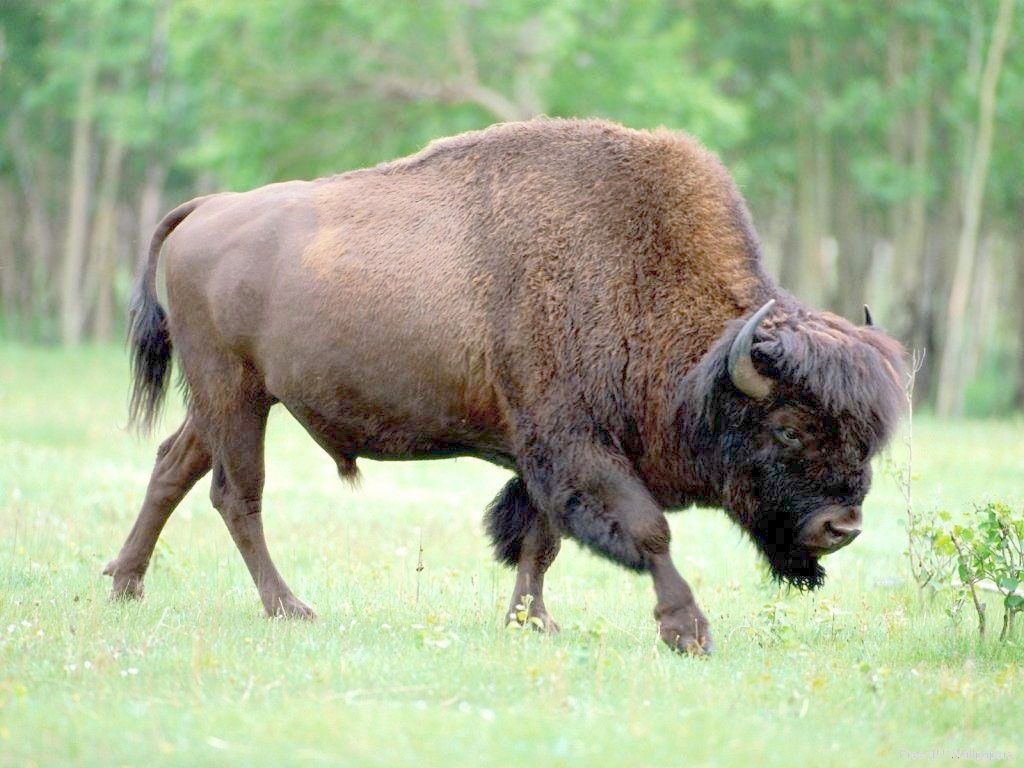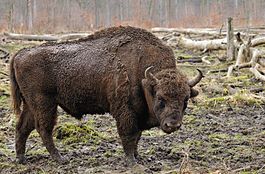Why did dinosaurs become extinct?
Our Earth is a very ancient planet. It was formed about 4,500 million years ago. The first living creatures on Earth were the simplest single-celled organisms - bacteria and algae. Amphibians (amphibians) came to land about 370 million years ago. For some time they remained the rulers of the world. But they could not fully dominate land: from time to time they had to return to the water to lay eggs.
In the end, it was because of this that they had to cede world domination to reptiles. Among the reptiles, a group of archosaurs stood out - “ancient lizards” similar to modern crocodiles. And apparently, such a species of lizards as Euparkeria became the ancestor of dinosaurs.
Dinosaur is a word known throughout the world, meaning “terrible lizard” in Greek.
Widely known, in the minds of most people they have become a kind of fairy-tale heroes, far from scientific reality. The famous English anatomist Richard Owen realized that these were not just giant lizards, but a special group of animals, proposing the term “dinosaur” in 1842.
The first dinosaurs appeared about 220 million years ago. But how can you imagine how long ago this happened? It may seem that dinosaurs lived almost at the dawn of time, but in fact the Earth arose much earlier than the first dinosaur was born. Our planet has changed many times beyond recognition. The shapes and sizes of continents and seas changed, the climate changed, animals and plants were transformed. Dinosaurs also changed. As a result, many different species of these largest animals in the history of the Earth were born.
The shape and size of each dinosaur were determined by its lifestyle. The small and agile compsognathus fed on small animals and ran quickly, hunting them. Allosaurus was a giant lizard, ferocious and muscular, and the long-necked Diplodocus had no trouble reaching leaves from high branches that other dinosaurs could not reach.
So, dinosaurs, before the first man appeared, were the rulers of our planet. They lived on land. These are cold-blooded animals. Their body temperature was completely dependent on the ambient temperature. The dinosaur's paws were under the body. This made it easier for them to move around. Dinosaurs walked on either two or four legs.
The dinosaur is considered one of the most successful creatures that ever lived on Earth.
How smart were dinosaurs?
The brain is the “control center” in the body of any animal. Through special channels - nerves - it sends signals to all organs of the body. Without command signals, dinosaurs would not be able to eat, move, smell, see, or scratch.
Approximately a thousand species of dinosaurs are now known, the remains of these reptiles are found on all continents, including Antarctica since 1986.
PROTOCERATOPS
“The predecessor of the horned eye.” Protoceratops is not a very large dinosaur: the size of a large dog (length - about 1.8 meters, height - 1 meter). But he looked quite menacing: a massive head, sharp beak-shaped jaws, a large bone collar... And he ate exclusively plants. He had a heavy body and a long thick tail (to maintain balance). The lizard moved on four legs - thick and short, but still allowing him to run quite quickly in case of danger. His neck was covered by a bone collar, which became larger and wider with age, and served as protection from predators. During the mating season, males showed off in front of females, exposing their collars. Scientists suggest that the heads, collars and crests of males were larger than those of females.
Thanks to the large and powerful jaw muscles, Protoceratops could tear off hard leaves with its curved beak. Then grinding the food with scissor-like teeth.
Scientists have found several Protoceratops nests located close to each other. This suggests that Protoceratops lived in family groups or entire herds. In 1922, a scientific expedition discovered clutches of Protoceratops eggs during excavations in the Gobi Desert (Mongolia). These were the first dinosaur eggs to fall into the hands of scientists. So paleontologists proved that dinosaurs laid eggs. As many as 30 eggs were found in one nest. Scientists suggest that these eggs belonged not to one, but to several females who shared the same nest. Protoceratops lived about 110-66 million years ago (the last third of the Cretaceous period), in Mongolia.
Dinosaur is a predator. OVIRAPTOR
“Egg Thief.” The fleet-footed oviraptor was only the size of a wolf (length - 1.5 - 2 meters). However, he had the nerve to steal eggs right from under the noses of much larger dinosaurs. The first Oviraptor skeleton was found in 1923, next to a nest full of Protoceratops eggs. The dinosaur's skull was crushed. Scientists believe that the oviraptor died trying to steal other people's eggs. Probably, the protoceratops found the robber near the nest and, in anger, crushed his head with a powerful kick.
Dinosaur eggs had a strong shell, unlike chicken eggs, and breaking them was not so easy. Instead of ordinary teeth, a pair of long, dagger-sharp fangs protruded from the oviraptor’s upper jaw. They could pierce egg shells without any problems. The absence of teeth did not hinder the oviraptor at all. The hooked beak and strong jaws easily handled the eggs. Its jaws, like nutcrackers, crushed even hard shells. Some individuals had a small bone bump on the nose, near the nostrils.
Others had a large crest crowning their heads. Why does Oviraptor have a bump on its nose? Scientists don't know the exact answer. It was possible to find several skulls of this lizard, and all oviraptors had bumps on their noses of different shapes. Perhaps the lump grew larger with age. Some oviraptor skulls are topped with intricate crests, but others had no crests. It is possible that only male skulls were decorated with crests. The short skull and large eyes make the oviraptor somewhat similar to the cassowary, a large flightless bird that lives in Australia today.
Some hadrosaurs returned to the same nesting site year after year, and entire herds of lizards laid eggs in the same familiar territory. This made life easier for the oviraptor: during the nesting period of hadrosaurs, he knew exactly where to get fresh eggs!
The front paws of the oviraptor had three toes. The first finger was slightly shorter than the others and quite mobile. With its help, the oviraptor grabbed dinosaur eggs and held them tenaciously until the contents were drunk. Oviraptor didn't need a car. Having plundered the nest, he ran away from the crime scene on his two powerful muscular legs. Since he did not have sharp teeth for self-defense, only agility saved him from his angry parents. Each foot had three strong toes with claws, with which the oviraptor clung to uneven ground so as not to lose its balance.
Oviraptors lived about 80 million years ago (the last third of the Cretaceous period), in southern Mongolia.
Why did dinosaurs become extinct?
Ever since dinosaurs were discovered, researchers have always wondered why they disappeared so completely at the end of the Cretaceous period. More than a hundred hypotheses were put forward on this score, but almost all of them turned out to be untenable. It has often been overlooked that, unlike dinosaurs, other groups of animals - crocodiles, lizards, snakes, turtles, birds and mammals - survived this critical time. Why were they an exception?
On the other hand, at the same time as land dinosaurs, sea lizards, ammonites and small marine animals, as well as land plants, disappeared. This means that they were influenced by the same reasons! The hypotheses about the global flood are untenable - after all, marine animals also died out, and many land animals were not affected at all. The hypothesis about the extermination of dinosaurs by primitive man, who, as has already been proven, appeared only 60 million years later, also has no basis.
Internal reasons associated with the dinosaurs themselves, such as their enormous growth and clumsiness, cannot be considered sufficient, since both the smallest and the fastest dinosaurs became extinct. The assumptions that carnivorous dinosaurs destroyed herbivores and then themselves died of starvation, or that all the dinosaurs were eaten by small mammals, also do not stand up to criticism. But then why didn’t they touch the reptiles that have survived to this day?
One of the newest hypotheses puts forward as the main cause a sudden catastrophe that occurred on Earth - a collision with a huge meteorite. According to this hypothesis, a celestial body with a diameter of ten kilometers fell to Earth. The impact sent up so much dust that the sky over the entire Earth darkened for many months. Plants that needed sunlight died, followed by herbivores, and then predators. A cooling occurred as the sun's rays no longer reached the earth's surface. Then warming came again, when the upper layers of the air warmed up again. And even if some species managed to survive the catastrophe, they still died as a result of its consequences, which lasted for years and centuries. If this catastrophe, the likelihood of which can be judged by a number of signs, was really so destructive, then the sudden extinction of all dinosaurs is quite understandable. But it is completely incomprehensible how such sensitive representatives of the animal world as birds could survive!
The more convincing and justified point of view is that the extinction of dinosaurs did not occur suddenly, but continued over a fairly long crisis period. Living conditions gradually deteriorated for those animals that were adapted to the previously uniform warm and humid climate, to the rich flora and fauna. Constant movements of continents and seas have led to significant climate changes. Due to the displacement of the earth's crust and the expansion of the ocean floor, more and more shallow areas turned into land areas with more sparse vegetation. Warm conditions without any temperature changes gave way to colder nights and harsher winters.
Many dinosaurs were deprived of their usual feeding conditions when food was abundant everywhere. Cold nights and winters are unfavorable
affected the breeding of offspring. The babies grew more slowly, certain types of dinosaurs became increasingly rare and gradually began to die out, in some regions earlier, in others later. The crisis period continued on land for at least five million years. There was a process of extinction of dinosaurs and flying lizards. Along with them, entire species of plants and mammals also disappeared, but they were already replaced by new ones.
A meteorite strike or some other sudden catastrophe could only significantly disrupt the living conditions of animals and plants and cause the process of gradual extinction of many of their species, but not destroy them immediately. This point of view provides a more logical explanation for the mysterious disappearance of dinosaurs.
Possible explanations for the extinction of dinosaurs
- Competition from mammals
- General climate cooling
- Decreasing brain size



No comments here yet.